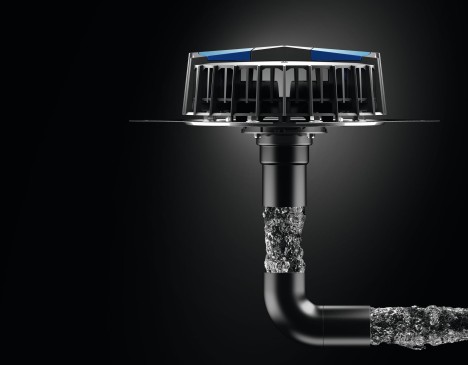A perfect solution
The tried-and-tested Geberit Pluvia roof drainage system
When it comes to efficient roof drainage, the tried-and-tested syphonic roof drainage system Geberit Pluvia is a safe choice.
A warehouse extension in Pfullendorf in south Germany has a roof area of 19,230 m2. During heavy rainfall, tens of thousands of litres of water per minute can pelt down onto an area of this size – and up to 75,000 l/min during a once-in-a-century period of extreme rainfall. Although such events are rare, drainage systems have to be able to cope with such large volumes of rain.
Designed to cope with once-in-a-century periods of extreme rainfall
The Pluvia drainage system from Geberit, which works on the basis of negative pressure, can easily handle such large volumes of water. So how does it work? While Pluvia works like a conventional roof drainage system during light rainfall, the pipes fill up rapidly and without air pockets when there is heavy rainfall. A closed water column thus forms in the pipes, causing the water to be quickly and efficiently suctioned off. Around 140 roof outlets with a capacity of 14 litres per minute as well as approximately 3,000 metres of Geberit PE pipes are required for the above-mentioned roof surface. The main drainage system can drain around 40,000 litres of rainfall per minute. The emergency drainage springs into action as soon as the rain exceeds the capacity of the Pluvia system – i.e. at over 40,000 l/min.
Thanks to the negative pressure system, only few discharge stacks are required. Under the roof, the Pluvia roof outlets are connected to the installed discharge stacks made up of PE pipes. The leakproof connection is ensured by means of butt welding or using electrofusion couplings. A patented fastening system ensures that the pipes are securely fixed into place.
Know-How Installed
The syphonic roof drainage system Geberit Pluvia uses pipes with small dimensions, which fill completely with water when it rains heavily. A closed water column thus forms in the pipe, which results in natural negative pressure and also ensures a high discharge rate. This is Know-How Installed.

